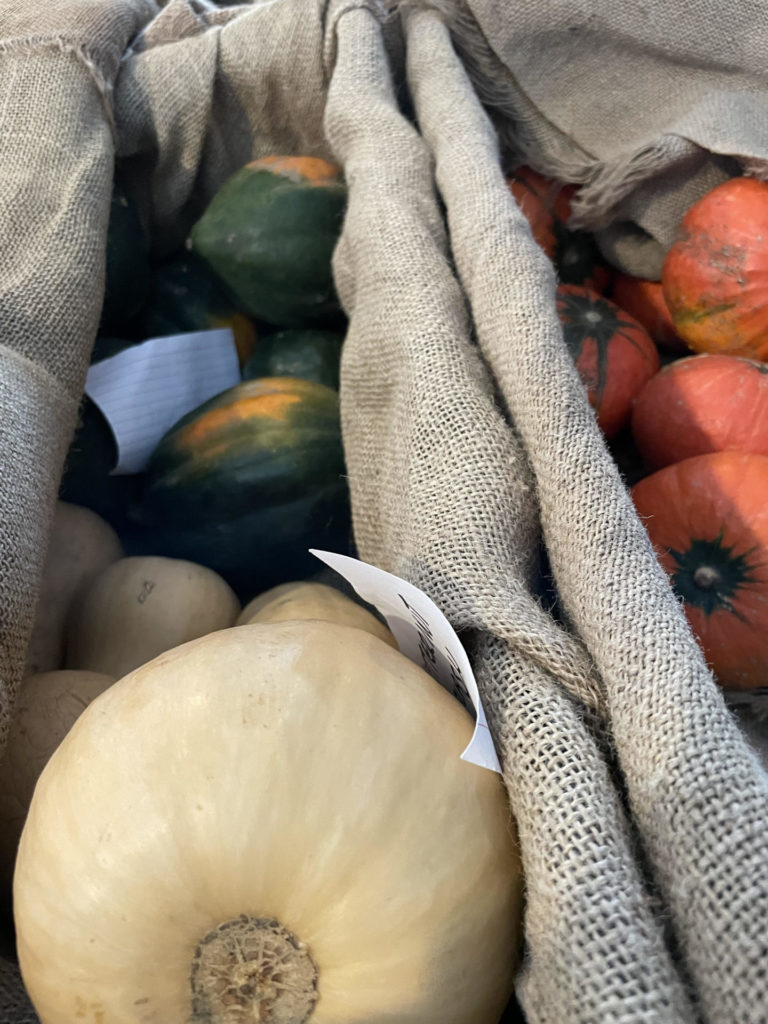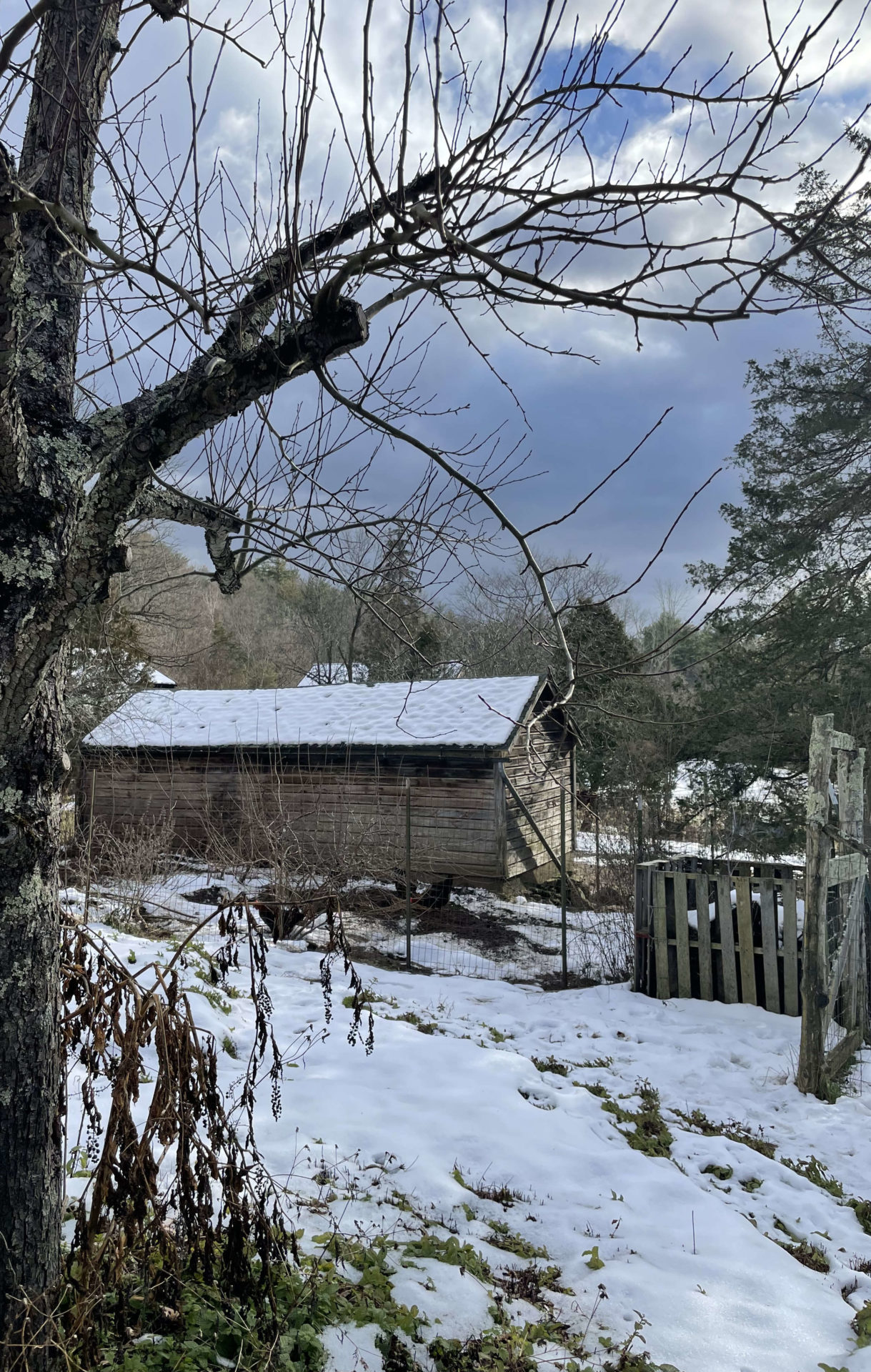A Scots highland cow is lying down in the sun on a winter afternoon, resting in her pasture near the barn. She is a reddish caramel brown with long spreading horns.
She is really very gentle, says Dominic Palumbo, as he rubs her forehead. She has lived here, at Moon in the Pond Farm in Sheffield, for more than twelve years. And she and her family are rare in the Berkshires, even among local farms, like many of the plants and animals he grows and raises, farms and forages.
“I’ve had Scottish Highlands for about 20 years now,” he said. “… I got them initially because they are extraordinarily beautiful.”
‘I’ve had Scottish Highlands for about 20 years now … They are extraordinarily beautiful.’ — Dominic Palumbo
With her calm gaze and her thick winter coat, she is unusual in more ways than one, he said. She is a compact heritage breed, living out on grass (with hay in the winter), and she has already lived three or four times as long as many cows at commercial dairies.
She is also a living part of a complex ecosystem. Palumbo sees his farm as a microcosm of nature, he said — as he plans for the next season, he is following the patterns of rearranging of resources and recycling that nature does constantly.
Along with heritage sheep and geese and chickens, he grows hazelnuts and mulberries, elderberries and mushrooms, and forages for aromatics like juniper berries. And his Highland cattle can prepare the ground for new growth.
Highlands browse and graze, he said, clambering over rocky hillsides in the rocky, shrubby, scrubby Northeast. As they balance their meals between the shrubs, the bushes and the grass, they actually improve pasture.
Palumbo plans to grow winter squash in this field next season. As he feeds the cows hay over the winter, and some gets left behind, and the manure builds up in this area where they’re fed, they are building and enriching the soil.
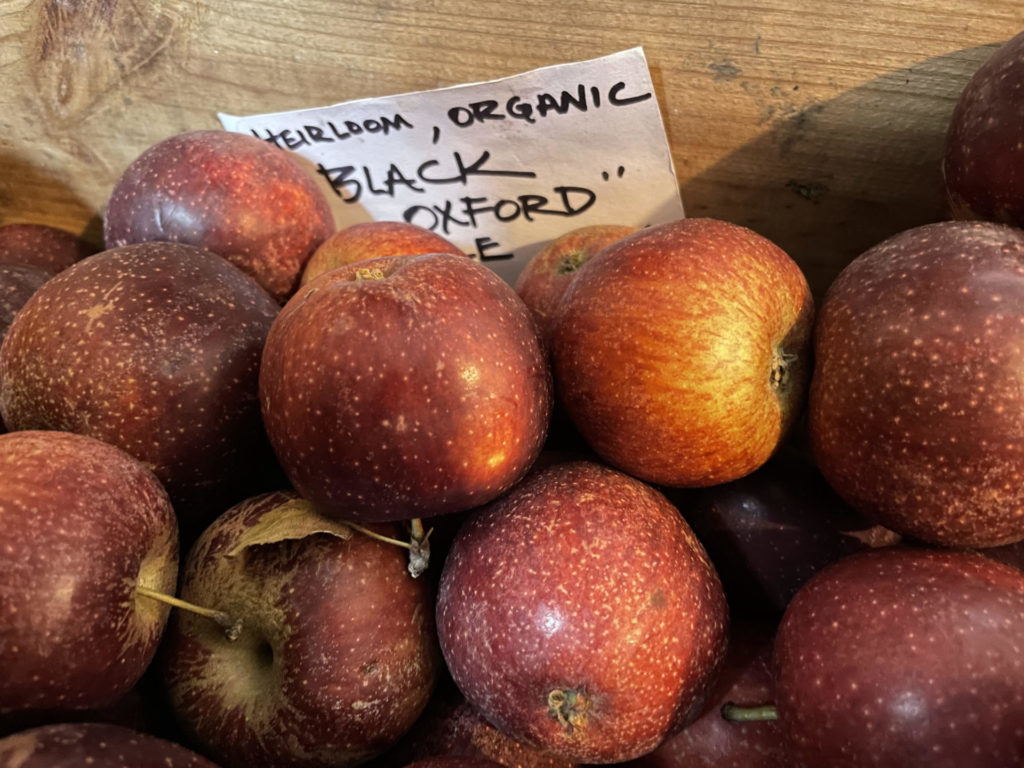
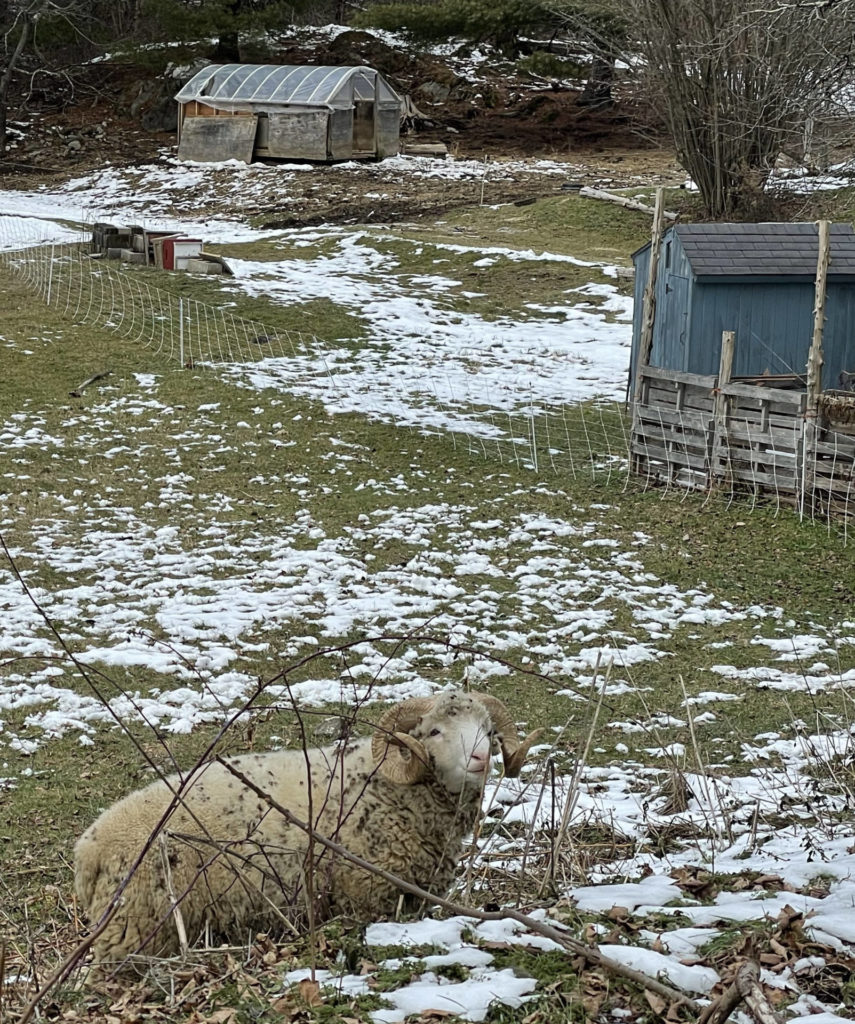
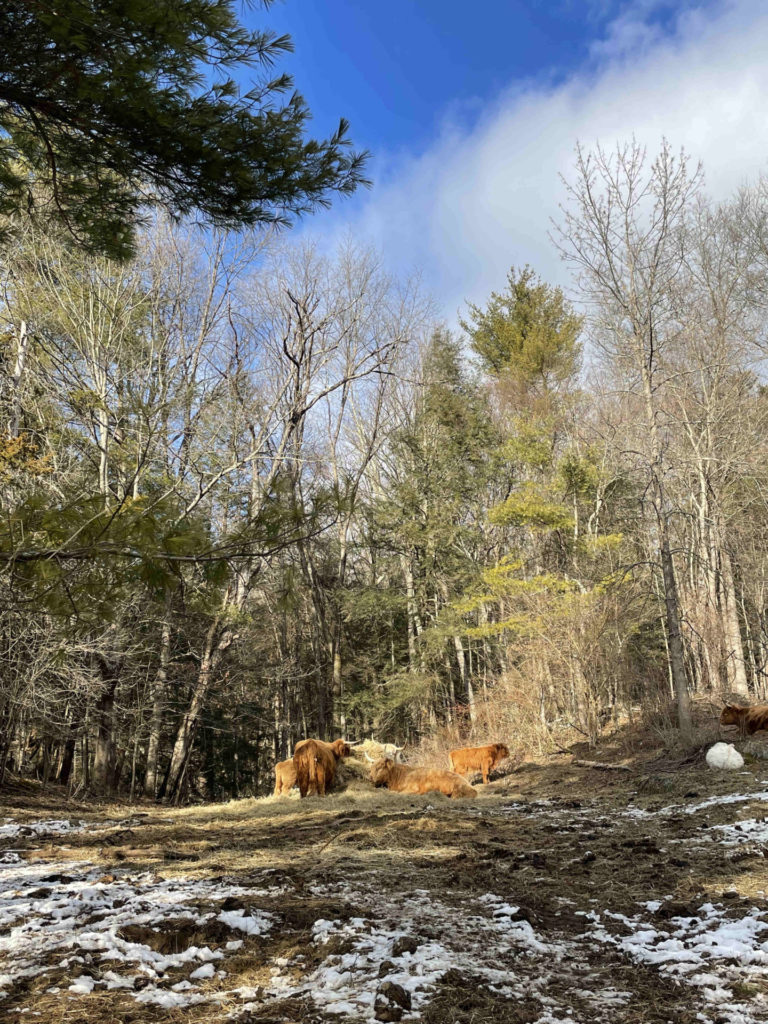
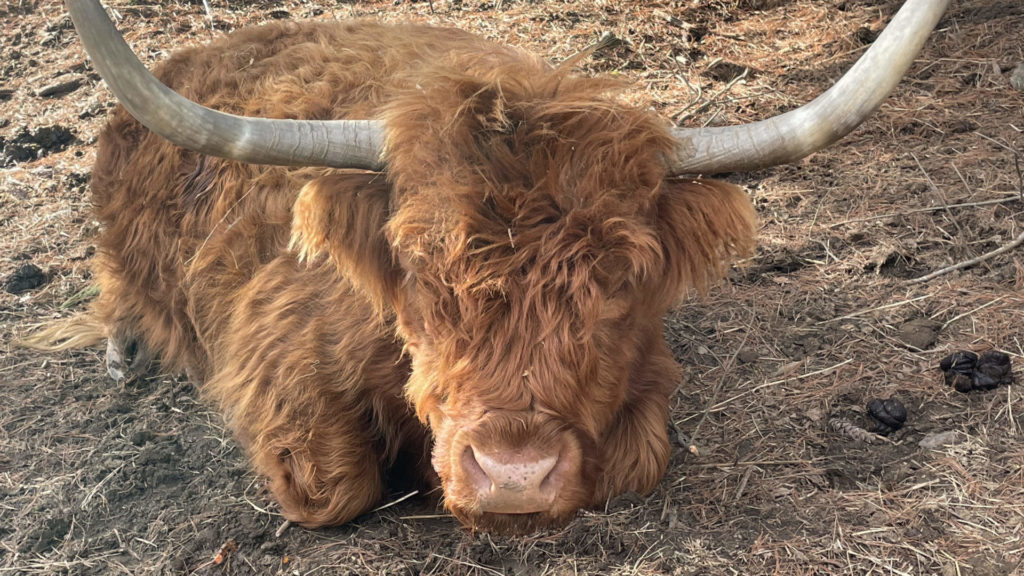
And he invites the community to come and meet them. Anyone can come to see the farm, meet the creatures and walk the land.
“We welcome people to visit here,” he said, “and in an effort to be completely transparent, you can see whatever we’re doing, because we’re not hiding anything, and we want people to know what we’re doing.”
Today many people have very little experience of farming, he said, and the only way for people in the community to connect is to be able to be here and see what it is — to relate to actual land, plants, gardens, work, people — the life force of a farm. And to be able to relate to that, they have to see it.
‘The only way for people in the community to connect is to be able to be here and see what it is — to relate to actual land, plants, gardens, work, people — the life force of a farm.’ — Dominic Palumbo

Heritage breed chickens come out for some sun on a winter day at Moon in the Pond Farm.
He too has learned over time how the lives of creatures and plants can interact on his land, as he has learned to know what grows here naturally. He looks at the homemade condiments and herbs and spices ready in the barn and thinks of the stories they each hold.
He discovered the pungent taste of local juniper, he said, the first time he raised pigs.
“I had to figure out what I was going to make out of all the different cuts of pork,” he said. “… And one of the questions was bacon and cured meat.”
“I had raised these organic pigs, I had fed them organically, I went to all sorts of lengths to give them the cleanest possible life — and when you make bacon, you cure the meat in chemicals. … And I thought, I’m not going to do that.”

A wreath hangs by the door of the weathered barn at Moon in the Pond Farm in Sheffield.
He searched libraries and bookstores (in those days before the internet) for old out-of-print books on how to cure meat, and he ended up with a recipe for making bacon that included juniper berries.
“And so I went and did what I thought was the most reasonable thing. I went to a store and bought juniper berries. … which I then found came from Bulgaria.”
And meanwhile he had been noticing for years the juniper trees all around him.
“Through the summer they were laden, just turning blue with the number of berries that are on them,” he said. “And so we harvested juniper berries by putting ladders under trees and putting tarps on the ground, and pulling the berries and letting them fall to the ground, and then collecting them in the tarps and cleaning them.”
That kind of close attention and natural convergence underlies all of his approach to caring for this place.
“I often refer to this farm as an eco-agricultural farm,” he said, “and talk about the ecosystem here. One of the first things that I do when I lead a tour here is to bring people to the compost pile. It’s the first stop.
“… They all think that we’re going to the field or we’re going to go see the herd of cows or the sheep. But we go directly to the compost pile, and that’s where the conversation begins about what a farm is.”
‘They all think that we’re going to the field or we’re going to go see the herd of cows or the sheep. But we go directly to the compost pile.’
He sees his farm as a series of cycles — recycling and reusing resources and taking his example from nature. The farm ecosystem is most productive when it’s most diverse, he said. Nothing goes to waste in a diverse system.
He rarely throws anything away, he said. All the kitchen waste goes to the compost or to the chickens … and so on through the whole system.
“When we make hay that isn’t suitable for feed, it ends up being mulch,” he said, “and it ends up being composted. It ends up building soil, or becoming bedding for animals, which then gets loaded with manure, which then ends up back on the compost pile, which then goes back onto the field.”

Dominic Palumbo stands in his greenhouse at Moon in the Pond Farm.
Farming is about relationships all the way through, he said.
“It’s about supporting the diverse relationships that exist in the soil, in the microorganisms in the soil and in the structure of the soil, the relationships of the plants to the soil, the relationships of the animals to the plants, of the farmers to the animals and the plants, and onward up through the community.”
Community relationships are essential, he said. To support the farm, he most often deals directly with the public, at farmers markets and here at the farm, and through CSA shares. He gives tours and educational programs for students, and he works with farming apprentices to work for the summer, for the opportunity to learn about the production of food and organic agriculture.
As he talks in the greenhouse, where his rosemary plants are keeping warm through the winter, chickens in deep shades of red-orange and black are sheltering from the wind in a wooden coop under a pollarded mulberry tree. The grey and white geese are commenting from the field by the barn, and sheep with spiraling horns look up from grazing nearby.
They are Dorset sheep, Palumbo said, a British breed that was once raised in the United States extensively because of the high quality of their meat. And today they have all but disappeared.
His parents and grandparents used to eat lamb all the time, he said, and now lamb is very rare on American tables. Dorset sheep are very, very difficult to find now, even though they produce the most sought-after, most flavorful and best-textured meat of all breeds, by a lot of evaluations.
So he sought them out, as he has sought out many heritage breeds, with a fascination he says not everyone understands at first.
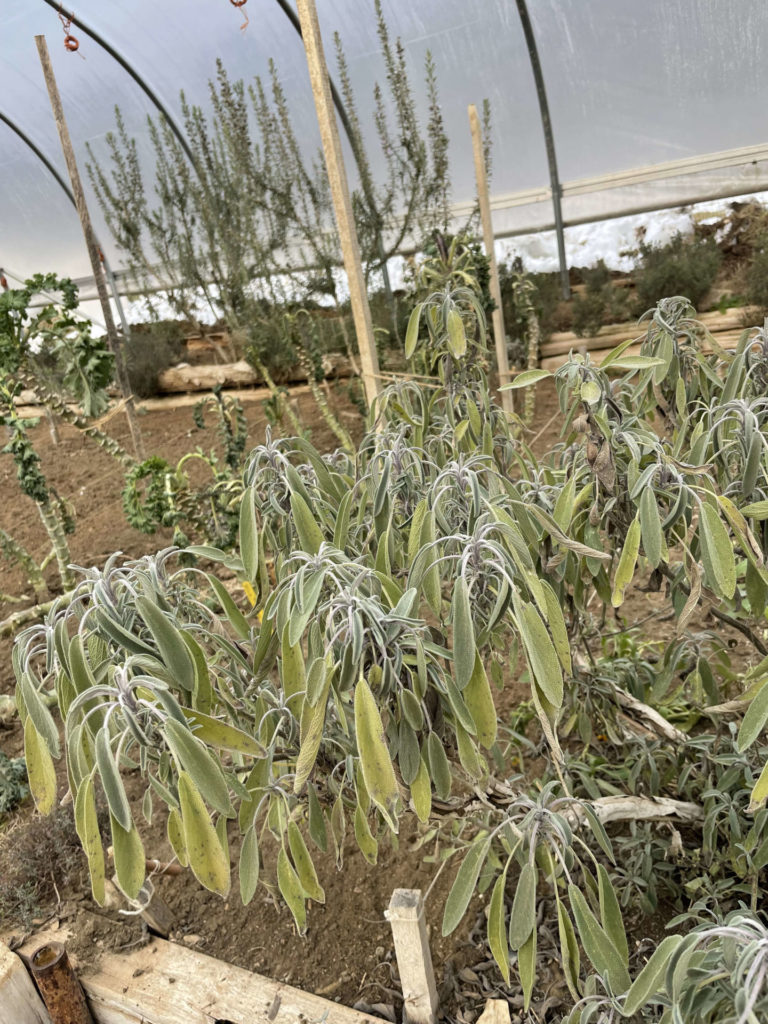

“People look at this and they think ‘oh yeah, it’s very kitschy to have heirloom varieties of vegetables and heritage breed livestock,’” he said. “That’s not why we’re doing it.”
He values his Jersey geese and his sheep because thousands of years of work have gone into breeding these animals to grow and thrive in natural conditions, he said, just as thousands of years have gone into cultivating plants that can thrive and resist disease and offer complex contributions to human health.
His cattle and sheep and birds can thrive in a natural system, he said. The animals on large-scale industrial farms have been bred for generations into a system of artificial inputs, from antibiotics to hormones to corn and soybeans.

Apples catch the sunlight in the barn at Moon in the Pond Farm in Sheffield.
A look at farming records will show clear differences between the animals people have raised for centuries and the animals that live now on industrial farms, he said.
“Not long ago, Holstein cows were half the size of what they are now,” he said — “their udders were half the size of what they are now. They were not able to produce the way they are now. But they also lived 20 years.
“And now a Holstein cow in an industrial dairy, as one dairy farmer put it to me, is barely able to replace itself. That is to say that a cow has its first calf when it’s two years old. That calf needs a year to develop before it produces milk. So we’re talking three years, and then that cow ends up going, as another dairy farmer put it to me, to MacDonald’s.”
He can remember a different approach from his childhood, and his parents and grandparents lived with it as a daily reality. He remembers a farmer down the road who died a few years ago, who had spent his boyhood summers walking his family’s cows back and forth from their pasture.
As a boy, the farmer would walk a couple of miles down the road, twice a day, to take the herd of 60 milking cows to their next pasture.
At the time, most cows went out to pasture and lived on grass, Palumbo said. And so that farm, which had 60 cows, needed a lot of fields to keep their herd well-fed through all the grazing months, from May until November.
So as a boy, the farmer would walk a couple of miles down the road to take the herd of 60 milkers to their next pasture. He would take that walk twice a day — in from the pasture in the morning, back to the pasture after milking, back in the afternoon to the barn, and back to the pasture in the evening. And everyone in town would see them walking by in the summer dusk.





